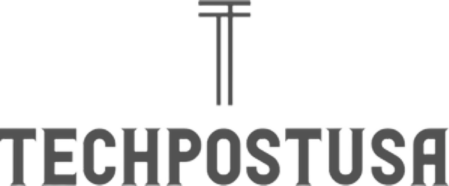Economics Education Levels Explained
Choosing the right economics course level isn’t just about picking classes. It’s about setting yourself up for success in a world where economic literacy matters more than ever. In 2025, economic debates—from inflation to industry-shaping policy—show why economic literacy matters more than ever.
Pick the wrong level and you’ll either drown in unfamiliar complexity or coast through material that doesn’t challenge you. The stakes are real. Your course choice affects your university applications, your readiness for college economics, and your future career options. Students who match their course rigor with their goals perform better across the board. They feel confident in finance roles, speak policy fluently, and arrive at grad school ready to roll.
Here’s where it gets interesting. The International Baccalaureate Economics SL course represents something special in this landscape. IB Economics SL strikes that sweet spot between accessibility and rigor—giving you quantitative tools without drowning in calculus while covering essential frameworks alongside practical examples. Most importantly, it prepares you for real-world economic thinking while keeping the workload manageable.
But before we zoom into each track, it helps to sketch the big picture first.
Mapping the Field
Economics education breaks down into three clear tracks. Each one serves different goals and demands different commitments from students.
Introductory-level courses keep things simple. You’ll see basic supply-and-demand graphs, learn what Gross Domestic Product (GDP) means, and discuss inflation in general terms. These courses require minimal math background. They’re designed for students who want exposure without deep commitment.
Standard-level ramps things up considerably. You’ll work with algebraic models and handle some introductory calculus. The curriculum covers both microeconomics and macroeconomics in detail. This level challenges you while staying manageable for most dedicated students.
Advanced courses demand serious mathematical preparation. Students tackle proof-based theory and multivariate calculus. They build dynamic stochastic general equilibrium models and apply Lagrange multipliers in optimization problems. Time-series econometrics becomes routine. These programs act as a launchpad to top graduate schools and require strong mathematical foundations from day one.
With that overview in hand, we’ll start at the entry point: the introductory route.
The Introductory Gateway
Introductory economics puts familiarity first. You’ll sit through lectures with minimal math and tons of real-world examples that actually make sense.
Students learn to read basic graphs and figure out consumer behavior. They can spot supply-demand shifts when they’re scrolling through news stories and grasp fundamental market concepts. The coursework covers supply-demand principles and GDP basics without diving into technical weeds.
This level works well if you’re exploring economics while juggling other priorities. It’s perfect for testing your interest before you commit to more intensive study. But there are trade-offs. These courses lack quantitative rigor and won’t develop the analytical reasoning skills you’ll need for advanced work.
While the intro level teaches you the ropes, the advanced track throws you deep into theory.
The Advanced Deep Dive
Advanced economics courses don’t mess around. They assume you’re comfortable with complex mathematics and ready for serious theoretical work. Students handle optimization problems, general equilibrium models, and sophisticated econometric analysis.
The skill development is intense. You’ll construct formal proofs, analyze multivariate datasets, and write technical research papers. Students master partial derivatives for marginal analysis, compute Hessian matrices for optimization conditions, and use multivariable integration in welfare calculations. Econometrics involves multiple regression analysis, hypothesis testing with t-statistics and F-statistics, and matrix algebra for parameter estimation.
It’s brutal, honestly.
These programs serve as a launchpad to top graduate programs and quantitative careers. But they demand significant time commitments and aren’t suitable for students who struggle with advanced mathematics.
Given how intense that dive can be, many students find themselves drawn back to the middle path.
Standard-Level Overview
Standard-level economics bridges introductory accessibility with meaningful analytical depth. This approach covers microeconomic principles, macroeconomic aggregates, market failures, and both fiscal and monetary policy.
The math requirements include graphical analysis, elasticity calculations, and basic growth models. Students develop solid quantitative skills without getting lost in complex theory.
IB Economics SL shows this balanced approach through its structured assessment system and comprehensive curriculum. Through a structured assessment system, IB Economics SL weaves real-world case studies into core models. Students examine the 2008 financial crisis to understand systemic risk. They analyze microfinance programs in Bangladesh to evaluate financial inclusion. Brexit’s trade implications provide lessons in international economics. Other case studies include Seattle’s minimum wage changes and European carbon pricing mechanisms.
This integration ensures students can analyze current economic events while building strong theoretical foundations.
Understanding the syllabus is one thing—experiencing its advantages is another.
Inside the Standard-Level Sweet Spot
Standard-level economics builds critical reasoning, data literacy, and policy analysis skills through its balanced curriculum. Students get extensive topic coverage alongside practical mathematical modeling.
The analytical skills you’ll develop? You’re looking at evaluating cost-benefit scenarios, interpreting complex data, and writing policy critiques. These capabilities prove valuable across academic and professional settings.
Here’s what makes standard-level economists so versatile in the professional world.
They can handle university seminars without drowning in theory. They analyze business data without needing a statistics PhD. They discuss policy issues without sounding like they’ve swallowed a textbook. It’s that sweet spot between too specialized and too general.
Course components like elasticity case studies, multiplier models, and market structure essays show practical applications. This foundation also prepares you for informed citizenship by teaching you to analyze inflation reports and evaluate tax proposals critically.
Of course, talent only shines if you know how it’s tested—so let’s look at assessments next.
Assessments and Time Commitments
The skills developed in standard-level economics get tested through various assessment formats that mirror real-world applications. Assessment approaches vary dramatically across economics levels, and honestly, it’s like comparing a pop quiz to a doctoral defense.
Introductory-level courses rely on multiple-choice tests, group projects, and minimal quantitative work. These assessments focus on conceptual understanding rather than analytical depth.
Standard-level tasks—data-response questions, policy essays, and investigations—blend quantitative analysis with qualitative evaluation. These tasks require you to apply theoretical knowledge to practical situations.
Advanced courses use proof-based exams, extensive econometric projects, and research papers that resemble professional academic work. Time commitments vary significantly. You’ll need to balance problem sets, essay writing, revision sessions, and other obligations carefully.
Pass those exams and projects, and this is where the real payoff begins.
From Classroom to Career
Standard-level economics training doesn’t stop at graduation. Students who’ve tackled the fundamentals handle university micro and macro coursework without breaking a sweat. They jump into seminar discussions with confidence and knock out quantitative projects that used to intimidate them.
Having tackled the fundamentals, grads breeze through university micro and macro—and go on to roles as analysts, junior policy advisors, or media explainers.
But here’s the kicker.
Your civic life changes completely. When politicians roll out stimulus proposals, you’re not just nodding along anymore. You’re asking the hard questions. Media claims about inflation or unemployment? You can spot the weak arguments from across the room. Even your personal finance decisions get sharper because you understand how markets actually work.
Graduates show up to community budget meetings with real insights. They help local development projects by running proper cost-benefit analyses. Nonprofits call them when they need someone to figure out resource allocation. When the Federal Reserve makes announcements, these folks can translate what it actually means for regular people.
That blend of theory and case studies means you can dissect today’s headlines and then carry those skills straight into university work or a professional role. Standard-level graduates often outperform narrow specialists who can’t see the bigger picture. They also beat out generalists who lack the analytical tools to dig deep when it matters.
All those outcomes hinge on picking the right course up front—so here’s a decision-making guide.
Practical Decision-Making
Making the right choice requires honest self-assessment across several key areas. Start with math readiness by evaluating your comfort with algebra and basic calculus concepts.
Consider how each program aligns with your goals in academics, industry, or public service. Different levels prepare you for different pathways, so clarity about your aspirations helps narrow the choice.
Conduct a realistic time audit—how many hours can you dedicate each week to economics study? Be honest about your other commitments and responsibilities. Create a comparison matrix that shows tier features, average workloads, and likely outcomes. This visual tool helps you weigh your options systematically and make an informed decision.
Armed with that roadmap, let’s step back and see the bigger picture.
Reflecting on Your Journey
Standard-level economics hits that sweet spot most students need. We’ve broken down the three tiers, looked at how standard-level balances everything out, and checked what actually happens to graduates. The data’s pretty clear: standard-level programs work best for students who want solid preparation without getting buried in complexity.
When it comes to choosing your educational tools, you wouldn’t grab a microscope to measure a football field, right? Same logic applies here. Don’t pick advanced economics just because it sounds impressive if standard-level actually matches your goals and math background.
Spend time with those course catalogs and talk to your advisors; trust this roadmap, and your future self will thank you.
Start weighing your options now—your future self will thank you.



